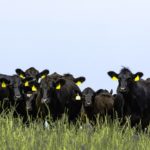For centuries, agriculture has been a major contributor to the economic engine of Quebec and to the vitality of its rural regions. In 2016, the GDP of Quebec’s bio-food industry was 7.4 per cent, totalled $23.4 billion, and created 12 per cent of jobs in the province. From 2013 to 2016, the GDP of the[...]


Get smarter with your smartphone
There’s no doubt that smartphones are an incredible tool for farmers. We get the power of the internet in a device that fits in our pockets. With it comes the ability to check the weather, sell grain, listen to an audiobook, or identify a weed at the touch of our fingertips. Add in social media,[...]

Where are investments in Canadian agricultural research headed?
“Sunny today but with clouds on the horizon” is how Serge Buy describes Canadian government investment in agricultural research. “There was more willingness for the federal government to invest in budgets 2016 and 2017, and some of the provinces are following suit,” says Buy, who’s the CEO of the Agricultural Institute of Canada (AIC). “That’s[...]

More together
More farmers agree that the old saying has it about right: Failing to plan is planning to fail. It’s too easy to get off-course if you haven’t set your intentions and goals to paper. Besides, how do you track your success if you don’t have goals? Having completed a succession plan that lays the groundwork[...]

Putting down roots in Canadian soil
Before we even exchange our first word, I get a sense of Raymond Ngarboui. When we meet, he’s on the phone with a refugee settlement counsellor who asks if he might have garden plots available for two families from Burundi, recently arrived in Winnipeg and feeling stressed and isolated. This is 43-year-old Ngarboui’s side-project but[...]

Governing the farm
Like many farms with added complementary enterprises like a trucking company or livestock barn or a seed business, Tomtene Seed Farm at Birch Hill, Sask., has developed systems to juggle all the moving parts. “Maintaining identification and producing seed products of quality merit takes a shift in thinking about the products, about production, about the[...]

Growing soybeans in southern Alberta
For some Prairie farmers, the question of whether to introduce soybeans into the rotation may seem like a no-brainer. They’re good nitrogen fixers and have proven a hit on rain-fed land in Manitoba and Saskatchewan, where soybean acreage has increased dramatically over the past decade. But if you’re a producer in Alberta, the answer is[...]

Uber-stores for food
Marcia Woods’ frustration at not being able to buy the high-quality food that she knew was being grown right down the road evolved into an online business that not only connects farmers with wholesalers, but also solves their transportation and cash-flow headaches. Coming from a long line of Oxford County farmers in Ontario, Woods, who’s[...]

New mentorship program looks to connect Angus breeders
What kind of advice can an Angus breeder in the Maritimes give to a breeder in Manitoba? If their management practices are similar enough, they might be about to find out. Participating long-term breeders will be paired off with industry newcomers this summer after the Canadian Angus Association launched its national mentorship program June 10.[...]

Is local food good for farmers?
Alison Blay-Palmer has been studying and promoting local food systems for nearly 20 years, and her enthusiasm for the topic is greater than ever. Blay-Palmer is director of the Centre for Sustainable Food Systems at Wilfrid Laurier University in Waterloo, Ont., where she explores the big questions around sustainability. Those big questions include social justice,[...]


